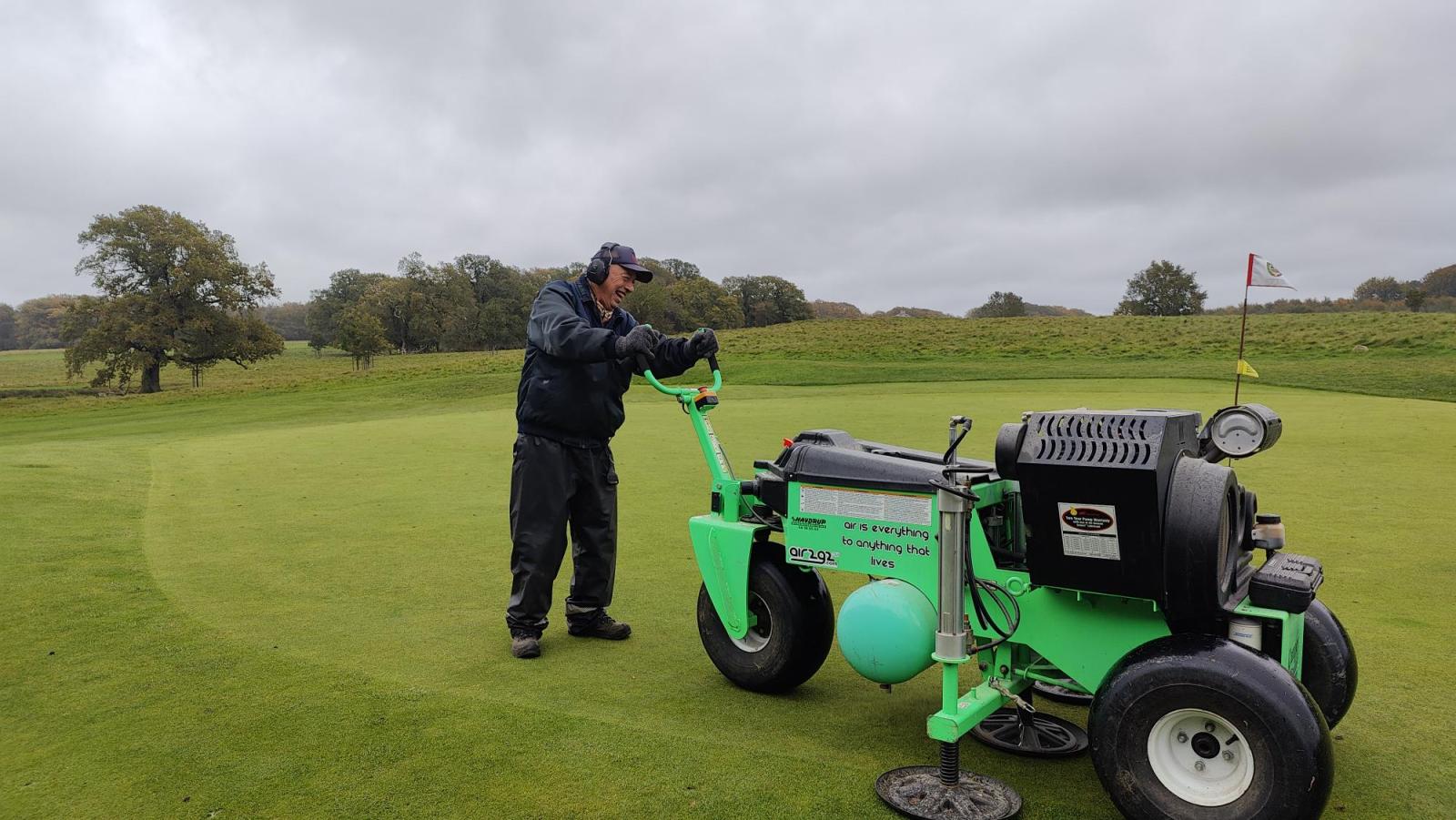Welcome to this season's November. Lots of rain and debris, falling leaves, short days. Autumn came quickly this year. The beautiful sunny days in August during the anniversary week are far away. But November – and the rest of the winter months – can easily accommodate many dry days with beautiful golfing weather and it is great to be a member of a golf club with an open course, an open and hospitable restaurant and a warm wood-burning stove in the lounge. In the greenkeeper's yard it is heartwarming that Rasmus has become the father of a healthy boy. Big congratulations to Rasmus and his family.
There are no set dates for major maintenance work on the course during this period. All major work on the course is weather-controlled. If the course has dried up enough, this will be used to complete a final series of maintenance tasks such as topdressing the tees and driving range, aerating the paths, dotting the surroundings and working on the irrigation system. Information about the work will be provided via golfbox and the GLFR app.
Regular course maintenance is now limited to tumbling and de-misting the greens to ensure play quality and health, and occasional mowing of tees and green surrounds. Mowing of fairways and semi-roughs will be a surprise as it will rarely be dry enough to do so.
The days are shortening rapidly during these weeks and that always means higher deer activity. It's as if when we players disappear from the field the deer move in. Now is their time for real. When the ground is soft and the growth is small, the number of injuries increases and they heal very slowly if not at all.
Because now it is autumn, very soon winter. The temperature drops and the daylight disappears and then the grass goes into hibernation. The grass does not really come out of that hibernation until late April, maybe not until mid-May like this year. That is almost half a year, during which the grass has to be able to withstand golfers like deer. Half a year.
A central part of the greenkeeper's job is to ensure that the golf course gets through this long period of time without growth and without the ability to repair damage. In daily life, it is about reducing and distributing wear and tear and avoiding winter disease, mainly on the greens. But the work is very long-term. Choosing the best grass species, top dressing, fertilizer strategy and the ability of the soil to get rid of excess water form the basis for healthy, firm and dry surfaces that can get through the off-season. If the greenkeeper does not work long-term, the golf course will slowly but surely degenerate.
Until spring returns, we need to find a way to play golf on the course in the off-season that still gives us a good starting point. I will be back very soon with an update on how we will play golf on the course this winter.
For many years I have been a member of an erfa group consisting of like-minded greenkeepers from the Copenhagen area and a single course in Sweden. The group is a professional community created to share knowledge about caring for golf courses without the use or with a minimum use of pesticides. It is the Danish legislation in the field that has driven our interest. The biggest event of the year is the holding of our “Tour de Fungus”. It is a day in November when we just get around to all our courses and examine the greens for fungal disease and new care measures that reduce the occurrence of fungal attacks. Over the years, this has led to a number of adjustments in the care of the greens.
Reducing the use of pesticides on Danish golf courses is now becoming an international phenomenon. The EU is considering completely abolishing the use of pesticides on golf and football courses. Let's see, but that means our small group will get a lot of attention from abroad. Over the years we have had a lot of visitors from abroad, but this year's "Tour de Fungus" will be especially entertaining. We will be visited by Ryder Cup hero Alejandro Reyes, former head greenkeeper at Le Golf National and advisor to Marco Simone, and Micah Woods, a grass scientist from the USA. It gives us a chance to pair pesticide-free operation with top-notch skills for the benefit of the environment and the golfers.
As always:
Remember to use your pitchfork
Remember to use the sand in your divot bag
Tear after you in bunkers
And use the mat when it comes out of hiding
Enjoy!
Martin Nilsson, chief greenkeeper

